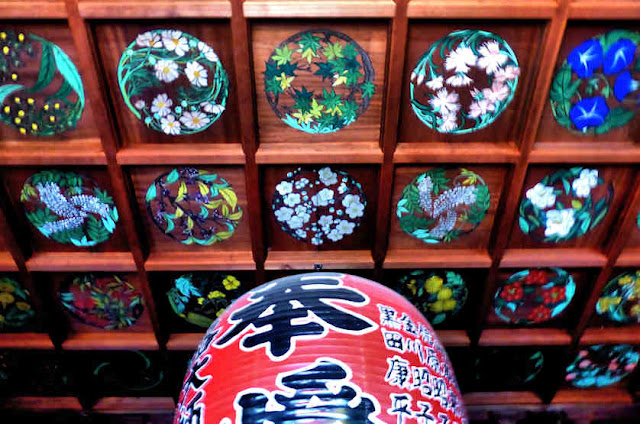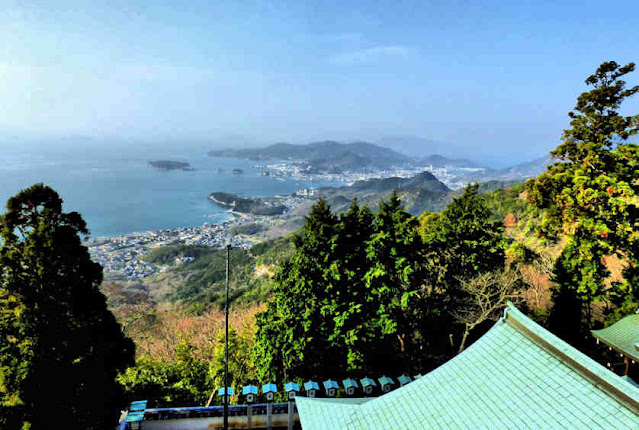Thursday, July 24, 2025
Nishinotaki Ryusui Temple 42 Shodoshima Pilgrimage
Saturday, June 7, 2025
Bukkokusan Temple 41 Shodoshima Pilgrimage
Bukkokusan Temple
A pair of newish stone Nio guardians flank the road, and either side is lined with stone lanterns. Just before reaching the simple gate a bronze statue of Kobo Daishi, the focus of the 88 temple pilgrimage, looks down on approaching pilgrims. The temple itself is quite small, with just a stylized temple entrance facade to the cave front. A few statues are out in front of the temple which has great views to the south and east.
One statue stands out as it is not any of the usual Buddhas, but rather a pair of Oni, demons or ogres, the male painted red and the female painted blue. There are two stories relating to the origin of the statue.
The first is that in ancient times a demon inhabited this mountain and continuously attacked local people who ventured into the mountains. This is a very common story found all over Japan. The demon was eventually pacified and stopped attacking people when he became a disciple of Yakushi Nyorai, the Medicine Buddha. Buddhism pacifying demons is also a very common story.
The second legend is set much later in the time that intermarriage between classes was forbidden. This is also a very common story all over, and more often than not ends up with a love suicide. In this local story a pair of young lovers from across the class divide chose to run away together and finding themselves at the cave as night was falling chose to spend the night in the cave whereupon they consummated their relationship. Unable to return home the story is vague about what happened to them although the two stories became linked together and the demon became a kind of protective deity of the mountain and the cave became known as a place to pray for a successful marriage, children, and easy birth.
The interior of the cave is quite magical with many candles, some in niches carved in the rock walls, providing the only illumination.
There is a very unusual painted statue of the aforementioned Yakushi Nyorai with distinctly female facial features. This is the honzon, the main deity, of the temple.
There are another couple of statues and in the deepest recess of the cave a small stone Fudo Myo in front of which Goma fire rituals are held.
Numerous bunches of Senbazuru, the folded paper cranes in multicolors, many of which have become blackened by years of soot.
Sunday, October 27, 2024
Shizuma Shrine & Shizunoiwaya Cave
Shizuma Shrine is on a small road close to the coast in Shizuma near Oda in Shimane.































































